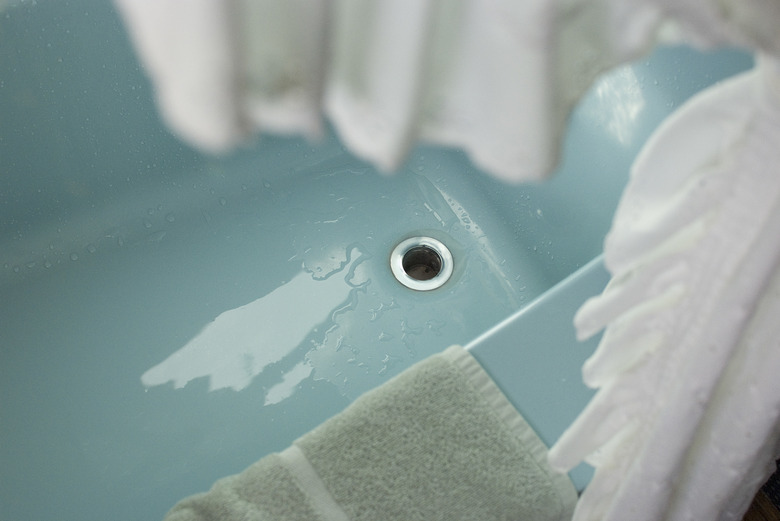How To Move A Bathtub Drain
Homeowners may need to relocate bathtub drains or sewer pipes when remodeling their bathrooms, moving their tubs or installing new tubs. These pipes attach the tub's P-trap to a coupling that connects to the home's sewer line. They are usually glued in, and if you need to move your drain, you will be working with these and white PVC or black ABS sewer pipes.
Preparing for Repairs
Preparing for Repairs
Depending on where you are moving the drain, you may need to purchase new pipe, couplings and a P-trap. Wear safety goggles and safety gloves while working and turn off your home's main power and water supplies before starting.
How to Move a Bathtub Drain
1. Find and Cut the Sewer Pipe
Locate the sewer pipe and mark it where it comes down from the tub, a 1/2 inch above its connection to the P-trap. Using a hacksaw, cut straight across the pipe. Trim any little pieces of plastic off with a pocketknife as you go.
2. Drill the New Drain Hole
Put the bathtub in place and draw a circle where the new drainpipe will go. Move the tub out of the way, and use a drill with a 1/2-inch wood bit to cut out a hole; it should be a bit larger than the pipe's diameter.
3. Attach the Pipe Coupling
Apply some pipe glue around where you cut the pipe and inside the end of the coupling. Insert the new pipe into the coupling, holding it in place for about 30 seconds. Continue to work, cutting and gluing the pipes until they reach the new drain.
4. Assemble the P-Trap
Put your P-trap together, but do not glue it together since you need to test its fit. P-traps normally have three parts that will need to be assembled. Place the P-trap's vertical end up on the drainpipe assembly's cut end. Holding it in place, push its other end up on the end of the sewer (drain) line.
The P-trap should be sitting in a completely vertical position. If not, cut a bit more from the end of the sewer pipe and try placing the P-trap again. You may need to do this a few times. When it is sitting vertically, you can then glue its pieces together and install them in place with more of the glue.
Troubleshoot Potential Issues
Troubleshoot Potential Issues
Sometimes, the distance that a drain is moved can exceed building code requirements. Another problem could arise if the drainpipe has an inside diameter that is smaller than 2 inches. Both of these could lead to poor drainage. Experts recommended checking with local building codes before moving bathtub drains.
Before attempting to relocate your bathtub drain, you should learn where your home's pipes are located, especially in the area where you hope to move the tub. This way, you will be less likely to encounter any unpleasant surprises when you are working. Also, be careful when you are moving the tub around since you do not want to crack it or otherwise cause damage.
